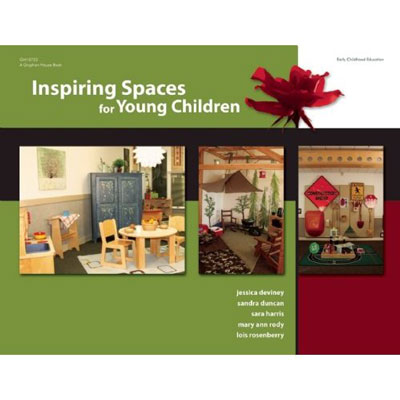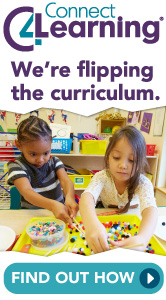ExchangeEveryDay Past Issues
 << Previous Issue
| View Past Issues | | Next Issue >>
<< Previous Issue
| View Past Issues | | Next Issue >> -Anne Frank, The Diary of a Young Girl, 1942
A recent study, reported by NBC News, has found that for young children, adopting a more subdued approach to classroom decoration has merit. The study was one of the first to examine how decorations impact learning. It found that when kindergartners were taught in a highly decorated classroom, they were more distracted and scored lower on tests than when they were taught in a room with bare walls.
"Researchers at Carnegie Mellon University followed a group of 24 kindergartners taught in two simulated classrooms: one with bare walls, the other decorated with commercial materials like presidential photos, science posters and maps, as well as the children’s artwork. During the lessons, children sat on carpet squares in a semicircle facing the teacher, who read aloud from a picture book. They participated in six lessons of five- to seven-minutes each in which the teacher read aloud on topics such as plate tectonics, the Solar System and bugs. After each lesson, the children took multiple-choice picture tests. Lessons were observed and videotaped to monitor how often the children were focused on the teacher or 'off task,' distracted by themselves, other students or the visual environment.
"In the sparse classroom, the kindergartners got distracted by other students or even themselves. But in the decorated one, children were more likely to be distracted by the visual environment and spent far more time 'off task.' Anna V. Fisher, the study’s lead author and an associate psychology professor, said the findings showed that the classroom environment can be distracting and negatively impact learning."
Contributed by Kirsten Haugen
|
Buy Inspiring Spaces and get a FREE downloadable PDF Exchange Essential of your choice ($10 value). Take these simple steps at check out:
|
|
Offer valid through February 11, 2017 at 11:59 pm Pacific Time. |






Comments (12)
Displaying 5 of 12 Comments [ View all ]Leonard Enterprises
Susquehanna, Pennsylvania, United States
I wonder what presidents were on the wall and what other commercial stuff? Plate tectonics, bla bla bla, they talk about that in kindergarten now? really? I bet one of the kids asked for it. Excuse me Mrs. Blender, Billy, Rashaad, and I were discussing plate tectonics and how it might affect the environment, gravity and stuff, oh and our marble games when we play with steelies. Would you teach us next week? What do you mean, "marbles are too dangerous for children my age"? You give me those back, I know how to build an EMP device and I will. C'mon some of those were my grandpa's. I been collecting since I was 3. Mommeeeeee...
.
Leonard Enterprises
Susquehanna, Pennsylvania, United States
I thank God I was at home with Gramma and Grampa, learning to be free and entrepreneurial at these childrens age. Has anyone noticed, oh yes someone mentioned prison, that the takeover from parents and local community of "education"(spelled prepared for us to use), happened about the same time as the industrial revolution? Im going to go watch "The Wall" again.
Sunshine Cornerd, Inc
Strasburg, PA, United States
This theory is just sad. A bare wall is institutional and haven't we tried to get away from this type of setting in ECE and kindergarten? Children should have color in their lives!
Intersquare
United States
I suppose that studies show that children learn better in prison settings, then inside the classroom. Seem that bars and gray walls were less distracting then chalk boards, ABC decorations and such.
Sponsored by
Comfortable Prisons, We are more than just Cells!
Seattle, WA, United States
When did "time on task" become a goal for young children? When do hildren select their own tasks? When do they get to have their own thoughts in an enriched environment? The researchers' goal sounds like training for the reptilian brain. Small mammals like decorations on their walls.
Post a Comment